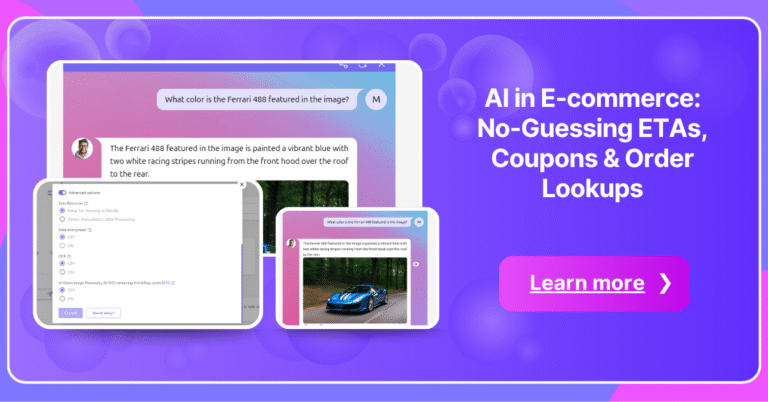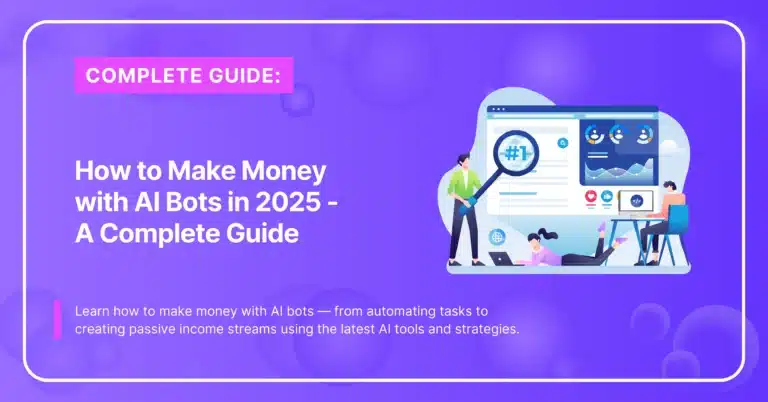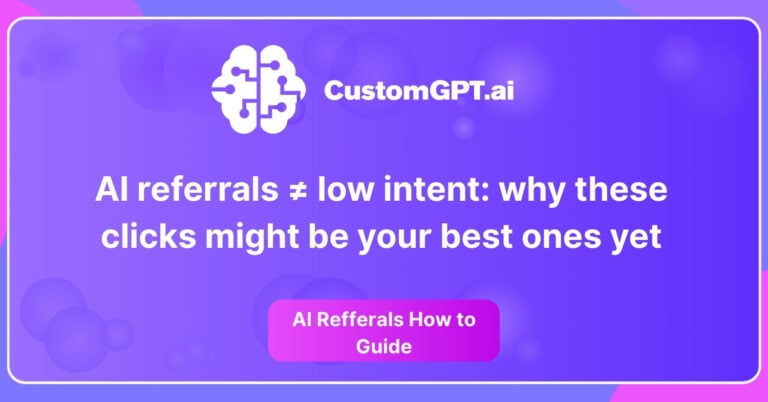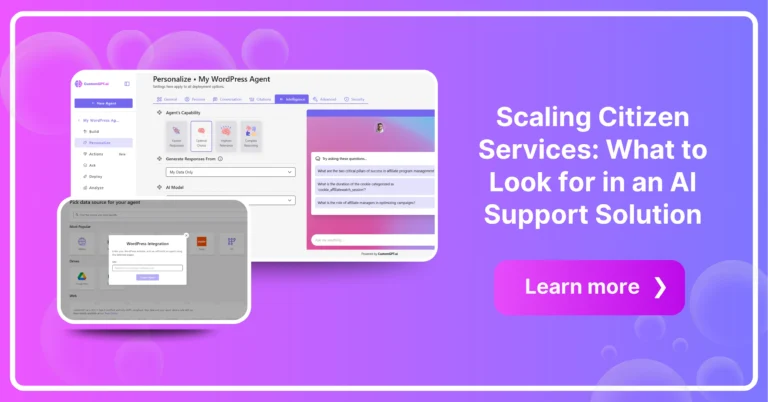Are AI Guardrails important? If you’re shipping AI, the #1 risk is confidently wrong answers—the kind that erode trust and create legal/compliance headaches. The fix isn’t “prompt harder.” It’s adding guardrails in AI that force evidence or a polite refusal. Adopt the baseline rule: S4 — Show Sources or Say Sorry. Every factual claim gets a verifiable source; when evidence is weak or missing, the system narrows scope or declines.
Key Takeaways:
- Hallucinations are a system design issue—adopt S4: Show Sources or Say Sorry.
- Put RAG first: retrieve from your private corpus, cite inline, refuse on weak evidence.
- Make privacy the default: in-house index, no-logging/VPC, permissioned agents, final validation gate.
- Prove ROI fast with ticket deflection, research time saved, and fewer escalations.
Build it: launch a guardrail-ready RAG custom GPT, fill gaps with Analyze, and ship grounded content with our Writers—then scale.
Author’s note: It can look complex—is NOT, but with our Slack support, this is your next step to reliable, low-effort, guardrail-ready automation for your business.
The Core Guardrail: RAG + “Show Sources”
Retrieval-Augmented Generation (RAG) constrains answers to your approved corpus (docs, wikis, manuals). Render inline citations that map claims to specific source chunks. If retrieval can’t back the claim, say sorry before the answer ships. That simple pattern dramatically reduces LLM hallucinations in support and internal tools.
Your Stack: Private Data, Private Agents
Build an in-house private dataset (searchable index) first and retrieve from it before generation. Enforce no-logging/VPC options during grounding so customer data isn’t retained. For safety-critical flows, add a final validation gate so ungrounded text never reaches users.
Hallucinations in LLMs: What They Are, Why They Happen
LLM hallucinations are answers that sound confident but aren’t grounded in reality. Models are statistical; some error is inevitable. The business risk isn’t that errors occur—it’s the confidence behind fabrications. In customer-facing or regulated contexts, that’s unacceptable. Focus on severity over raw error rate: grounded answers (with citations) or graceful refusals are safer than slick but unsupported prose.
How RAG + Permissioned Agents Reduce Hallucinations
RAG narrows the model’s universe to approved sources: your private corpus, curated enterprise web, or structured knowledge bases. Your UI ties each sentence to the exact source via a consistent grounding → citation pattern.
Permissioned (MCP-style) agents keep tools/data on tight leashes: whitelists/blacklists, role-based access, human-in-the-loop for sensitive tasks, and a universal post-processing check (final groundedness/safety validator) before anything renders to the user. Result: faster answers, fewer escalations, and clear auditability.
Implementation Checklist
- Adopt S4 org-wide: “Show Sources or Say Sorry.” Put it in UX copy and playbooks.
- Wire RAG first: retrieval before generation; parse grounding metadata server-side.
- Render citations: inline markers + a “Sources” list with titles/URLs.
- Refuse on weak evidence: missing/empty grounding triggers a helpful “sorry” path.
- Protect privacy: choose no-logging and VPC-isolated modes where supported.
- Add a final validation gate: for high-stakes or customer-facing flows.
- Test hard: maintain an Adversarial Prompt Catalog and score at scale with a strict, machine-parsable rubric (LLM-as-Judge) plus periodic human review.
ROI Snapshot (Why a $100 Plan Saves Thousands)
Every hallucination you prevent saves fact-check cycles, escalations, and brand damage. With guardrails in place, a single context-aware RAG chatbot can deflect a material % of tickets, accelerate research for marketing/sales, and keep answers consistent. Even conservative gains typically dwarf a $100/mo plan—especially when paired with grounded Ad Writer, Content Writer, and Custom Schema Writer so what you publish maps back to your approved corpus (not the open web).
Try it now:
Don’t wait on perfect prompts—ship trustworthy AI today. Spin up a guardrail-ready, context-aware chatbot with citations in minutes (private by design). If it doesn’t save time this week, don’t keep it.
Build It with CustomGPT.ai (Guardrail-Ready by Design)
Launch a customer-facing RAG chatbot grounded in your docs, with inline citations and a refusal path when sources are weak. Unanswered queries automatically surface gaps so your team can Analyze → add/manage data and keep the corpus fresh. For content ops, your Ad/Content/Schema writers reuse the same guardrails—so public-facing assets are on-brand and traceable to approved sources. In regulated or high-stakes workflows, the final validation gate enforces a consistent, org-wide groundedness policy.
FAQs
What are AI guardrails / guardrails in AI?
Practical controls (technical + process) that ensure every important claim is grounded in trusted sources—or politely refused. They reduce risk from hallucinations and keep outputs on-brand, compliant, and auditable.
What are LLM hallucinations and why do they happen?
They’re confident-sounding responses that aren’t based in fact. Modern models are probabilistic; some error is inevitable. Guardrails (RAG + citations + refusals) make those errors visible and controllable.
How do agentic AI guardrails differ from generative guardrails?
Generative guardrails control what the model can say (grounding, safety, citations). Agentic guardrails control what it can do (tool/data permissions, approvals, rate limits) plus a last-mile validator before output is shown.
Do I need my own private dataset? Is my data saved?
Yes—build an in-house index so the assistant is contextually aware of your truth. Choose no-logging grounding/VPC deployment so your data isn’t retained by the service. You control ingestion, updates, and access.
Where should I start?
Deploy a small RAG chatbot on one high-intent use case (support FAQs, sales enablement, policy Q&A). Prove deflection/time-savings, then expand. Use our Deployment Best Practices and Free Tools, and kick off with the 7-Day Free Trial for fastest time-to-value.
Conclusion
Hallucinations aren’t a prompt problem; they’re a system design problem. Teams that win put RAG + S4 at the center, pair it with permissioned agents and a final validation gate, and operate on a private, ever-fresh dataset. The payoff is immediate: fewer escalations, faster answers, and a durable trust story for customers and compliance.
If you’re serious about thriving with AI, a $100/mo guardrail-ready stack can save you thousands in verification and support cycles while letting your team ship with confidence.







